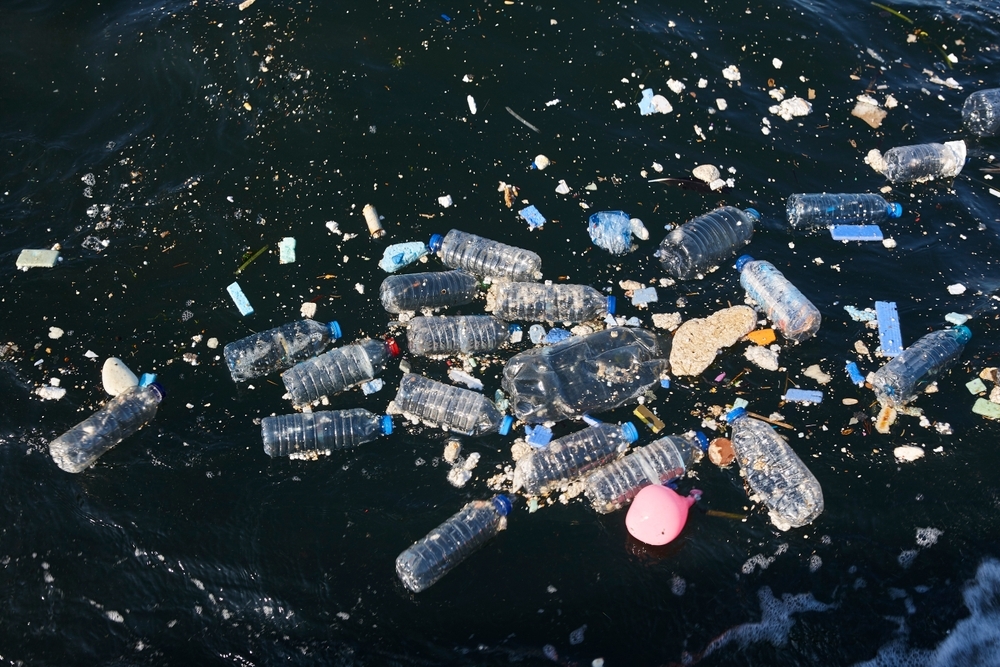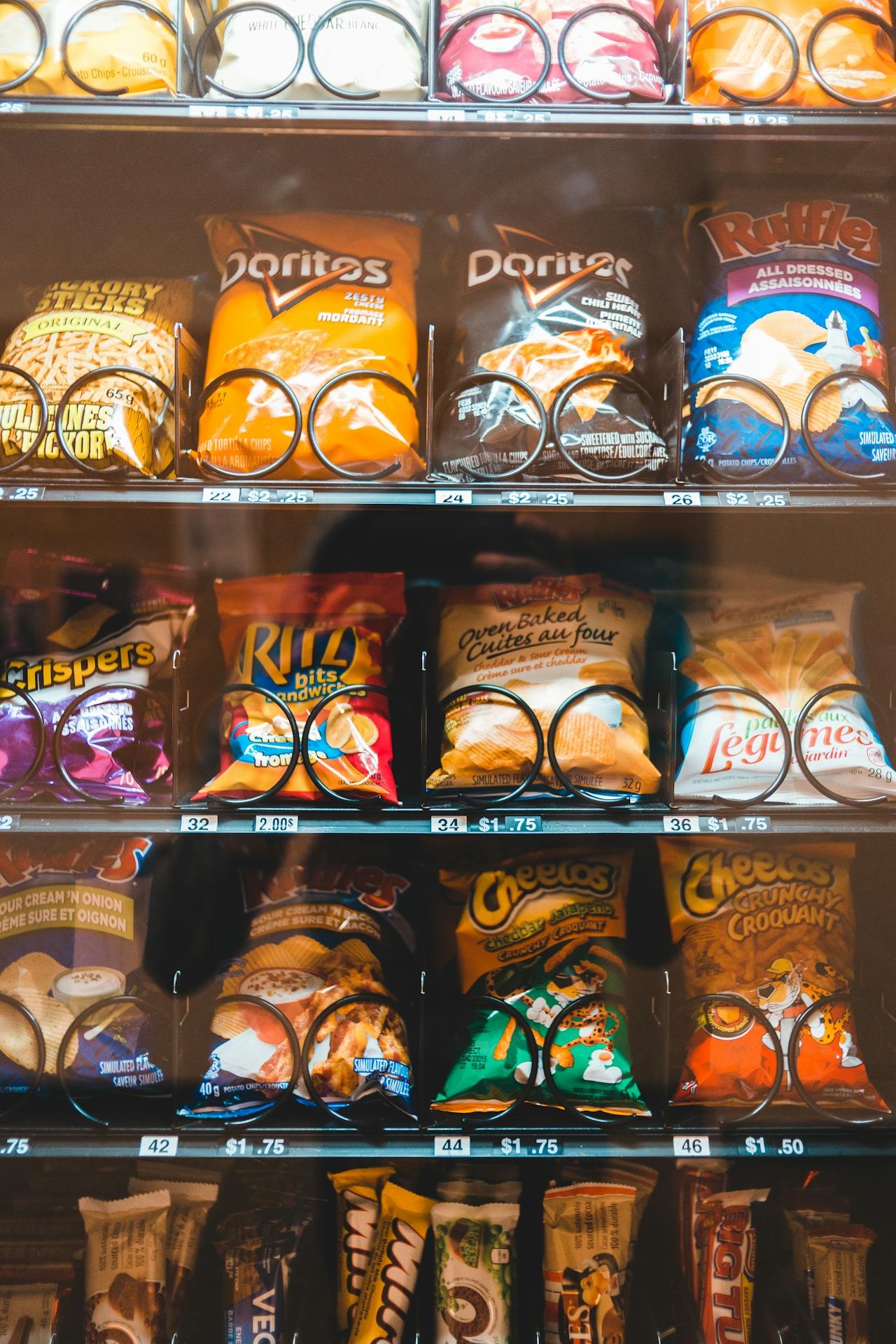Assessing the Food Packaging Environmental Impact
By Anttoni Taimela · 3. April 2024
Every sandwich wrapped, every meal boxed, we are faced with the food packaging environmental impact.
What’s the real cost to nature for our convenience, and can we mitigate it?
This article cuts through the clutter, scrutinizing how different packaging materials contribute to environmental degradation and spotlighting actionable sustainable alternatives essential for change.
The Environmental Consequences of Food Packaging
 plastic bottles sea garbage pollution environmental
plastic bottles sea garbage pollution environmental
Food packaging, although crucial for protecting and preserving food, substantially contributes to environmental degradation.
With so much food packaging in use, plastic packaging, a significant fraction of food packaging materials, is a primary source of pollution, causing harm to marine life and entering the food chain, posing broader ecological and human health risks.
To top it off, the production and incineration of plastic food packaging contribute to greenhouse gas emissions, adding to global warming concerns.
Most food packaging waste ends up in landfills or pollutes the natural environment, exacerbating the global plastic waste crisis.
Now, I see you thinking, “What about paper? Isn’t that a greener option?”
While paper packaging is often perceived as a more eco-friendly alternative, it has its fair share of environmental consequences.
The production of paper packaging is energy-intensive and contributes to water pollution.
So, what’s the solution?
Are we doomed to drown in a sea of plastic waste, or can we find a sustainable lifeline in this packaging predicament?
We should examine the environmental footprints of materials commonly used in food packaging.
Materials Commonly Used in Food Packaging
 Eco-friendly Food Packaging
Eco-friendly Food Packaging
The food packaging industry has seen significant evolution, with materials ranging from traditional choices like glass and metals to more complex compositions, including ceramics, paper, paperboard, and plastics.
The selection of these materials is influenced by various factors such as convenience, intended use, shelf life of the product, and the beneficial properties of plastics like low cost, good tensile strength, and effectiveness as barriers against gases and moisture.
However, the production of these materials significantly impacts the environment through resource consumption and pollution.
The shift in food consumption habits and the variety of available materials, each with their unique environmental footprints and recyclability, influence this impact.
We will now examine the environmental impacts of these materials.
Plastics
Plastic, the ubiquitous material in our daily lives, accounts for 50% of the fossil fuels derived plastics used in the packaging industry, causing significant ocean pollution.
The extraction and utilization of natural resources like crude oil, natural gas, and coal for producing plastic packaging have detrimental effects on the environment, contributing to deforestation and resource depletion.
But here’s the kicker: food contamination makes styrofoam containers often impossible to recycle, presenting a major recycling challenge for food packaging plastics.
Yet, recycling existing plastic materials consumes up to two-thirds less energy than producing new plastics from raw materials, highlighting the importance of recycling in energy conservation.
However, the production of plastics, including for food packaging, utilizes 4% of the world’s total fossil fuel supply.
Now, that’s a huge carbon footprint for something that’s usually used once and then discarded!
So, what about more ‘natural’ materials like glass?
Glass
Glass, the superhero of the packaging world, recyclable and reusable, is not without its kryptonite.
Recycling rates for glass packaging show a wide global disparity, with European countries achieving an average rate between 74-76% and the US lagging at 31.3%.
The color of the glass significantly affects its recyclability, with green glass capable of incorporating up to 95% recycled material, while clear glass is limited to around 60% due to stringent quality requirements.
The remelting process during glass recycling is highly energy-intensive, accounting for three-quarters of the total energy used in glass production.
Furthermore, the high temperatures required for melting and forming glass result in a more considerable environmental footprint than that of lower-temperature materials like plastics and aluminum.
In addition, glass packaging is heavier and bulkier than other materials, making it costlier to transport and leading to higher associated environmental costs.
But don’t lose hope yet! Let’s turn our attention to an old friend – aluminum.
Aluminum
Aluminum, the silver knight of the packaging world, has its dark side too.
The production of aluminum packaging is a result of mining bauxite, an energy-intensive and water-intensive process.
The production of aluminum releases:
- Greenhouse gases
- Sulfur dioxide
- Dust
- Wastewater
All of these have a significant environmental impact.
Furthermore, recycling aluminum packaging is challenging due to the chemical lamination processes involved, which complicate the recycling process.
The hurdles are high, but what about our trusty old paper and paperboard?
Paper and Paperboard
Paper and paperboard, the seemingly innocent materials, have their environmental toll.
Recycled♻️ paperboard frequently utilizes fossil energy during production, while fresh fibre paperboard primarily employs bioenergy, resulting in a significantly lower climate impact for the latter.
Even with advancements in paper recycling, the optimal utilization of wood materials involves ensuring that paperboard production is sustainable and that forestry practices are responsible.
We should turn our attention to innovative solutions in sustainable food packaging.
Innovations in Sustainable Food Packaging
 Sustainable Food Packaging
Sustainable Food Packaging
In the face of growing environmental concerns, the push towards sustainable packaging has sparked a wave of innovation.
Researchers are developing biodegradable materials for food packaging that aim to reduce long-term ecological impacts.
These sustainable packaging alternatives include products such as compostable netting from beech tree pulp, chitin-based packaging from prawn shells, and faster degrading pallet stretch wraps using proprietary additives.
Innovative solutions such as active packaging films for mangoes and compostable packaging for cherry tomatoes are being developed to replace conventional materials and extend the shelf life of produce.
We will now examine these innovations in more detail, starting with biodegradable materials.
Biodegradable Materials
Biodegradable materials, such as biodegradable packaging materials, are seemingly sent from Mother Nature herself to solve our packaging woes.
Biopolymers, derived from living organisms or biomass, are increasingly used for food packaging due to their ability to decompose without causing environmental waste problems.
Takeout containers made from bagasse, the fibrous remains of sugarcane after juice extraction, represent compostable alternatives to conventional foam or plastic containers.
These materials are key elements in reducing the fast food industry’s environmental footprint.
Even minor changes in food packaging to biodegradable options can greatly reduce environmental damage.
Plant-Based Plastics
Plant-based plastics are nature’s answer to the plastic problem.
These eco-friendly alternatives display versatility in food packaging, with products like NatureFlex film being used for cutlery packs, food bags, and being heat sealable, and cornstarch used for items like biodegradable plates, trays, and portion boxes.
Bioplastics are created from a variety of plant sources, including cornstarch for PLA and chitin from prawn shells and fruit waste.
Not only are they a fantastic replacement to traditional plastics, but they also have up to 75% smaller carbon footprint in comparison to traditional plastics.
But we can’t forget about our old friend, the reusable container. We will now determine how they fit into the grand scheme of things.
Reusable Containers
Reusable containers, the veterans of eco-friendly packaging, have come back into the limelight. Carrying reusable items such as:
- water bottles
- coffee cups
- spoons
- forks
- alternatives to plastic bags and cling film
By opting for reusable packaging, we can substantially reduce the consumption of single-use packaging.
Models such as reCIRCLE in Switzerland and Terracycle’s Loop initiative are pioneering container reuse in the food industry. These initiatives:
- are an answer to the plastic waste problem
- align with the ethical and social responsibilities of businesses
- align with consumer values regarding environmental stewardship.
Now that we’ve explored the problem and the solutions, let’s delve into the role we, as consumers, can play in promoting sustainable packaging.
Consumer Choices and Their Impact on Food Packaging
 branded food packs
branded food packs
As consumers, we wield more power than we realize.
By changing our habits and making conscious choices, we can drive the demand for eco-friendly packaging and support businesses that make environmentally responsible choices.
Education empowers us to understand the benefits of sustainable packaging, which is crucial for its widespread adoption.
We can reduce the environmental impact of food packaging through better buying choices, such as:
- Selecting products with minimal and greener packaging
- Reducing single-use packaging
- Supporting sustainable brands
- Ensuring proper disposal and recycling of materials.
Reducing Single-Use Packaging
Reducing single-use packaging isn’t as daunting as it sounds.
Simple steps such as carrying reusable♻️ items like water bottles, coffee cups, and alternatives to plastic bags can make a significant difference.
Choosing loose fruits and vegetables and shopping at bulk food stores with reusable bags and containers help cut down on the use of single-use plastic packaging.
Even businesses are jumping on the bandwagon, with initiatives like the introduction of LocoSoco Eco-Refill Stations and the practice of milk delivery in reusable glass bottles.
Supporting Sustainable Brands
Supporting sustainable brands is an easy way to vote for the environment.
Did you know that:
- Most consumers are likely to be influenced by sustainable packaging when making a purchase?
- By backing brands that prioritize sustainability, we can contribute to the demand for eco-friendly packaging and push more companies to adopt green practices.
- Half of millennials report checking for sustainability claims on packaging before purchasing, demonstrating a conscious effort to support sustainable brands.
Certifications such as the Forest Stewardship Council (FSC) and the Programme for the Endorsement of Forest Certification (PEFC) on packaging can assure consumers about the sustainable management of the forests from which the paper products are sourced.
Proper Disposal and Recycling
Proper disposal and recycling of food packaging materials are essential in reducing litter, conserving resources, and protecting ecosystems.
But, recycling of food packaging materials faces obstacles such as contamination which reduces the quality of the recyclables.
Economic factors, such as the fluctuating demand for recycled materials, challenge the viability and cost-effectiveness of recycling programs.
However, advancements in sorting and processing technologies may help overcome recycling challenges.
Investment in recycling infrastructure is required to improve collection, sorting, and reprocessing capabilities.
Public education on recycling practices can support the efficiency of recycling infrastructure and systems.
The Role of Businesses and Governments in Promoting Sustainable Packaging
Both businesses and governments have a significant role in promoting sustainable packaging.
Governments offer financial incentives to companies that employ eco-friendly packaging, encouraging the adoption of green practices.
Businesses are prioritizing sustainability over profitability, with eco-friendly packaging becoming a crucial part of modern business strategies.
We will now examine how industry initiatives, government regulations, and collaboration can foster innovation and eco-friendly practices.
Industry Initiatives
Innovation in eco-friendly packaging solutions is being pursued by the UK’s fast food industry to meet the rising environmental expectations of consumers.
Fast food companies focus on the following criteria when choosing packaging to align with sustainable practices:
- Material sustainability
- Functionality
- Design
- Disposability
- Safety
- Cost
Government Regulations
Government regulations play a significant role in promoting sustainable packaging.
Governments are promoting sustainable packaging by instituting regulations that encourage or mandate the use of recyclable and organic materials.
The upcoming UK government ban on single-use plastic packaging is pushing the fast food industry towards adopting alternatives like bagasse clamshell food containers and biodegradable cutlery.
Regulatory measures include stipulations that packaging must only use the minimum necessary weight and volume that are needed to protect and preserve the product.
Collaboration and Innovation
Collaboration is pivotal in fostering innovation in sustainable packaging.
This involves bringing together various stakeholders, including:
- Manufacturers
- Retailers
- Consumers
- Government agencies
- Non-profits
- Academia
Establishing partnerships with packaging solution providers and maintaining effective supply chain communication are integral to advancing sustainable packaging initiatives.
Companies must work on overcoming resistance to change and strive to align internal goals and priorities to enhance performance in sustainability efforts within the supply chain.
Knowledge sharing and valuing diverse perspectives contribute to the development of more effective eco-friendly packaging options and can lead to reduced carbon emissions from the packaging sector.
Summary
As we wrap up our journey, it’s clear that sustainable packaging is more than just an eco-friendly buzzword—it’s a necessity for our planet’s future.
From understanding the environmental impact of food packaging to exploring innovative, sustainable alternatives, we’ve seen how businesses, governments, and individuals can all play a part in promoting a greener future.
Let’s take these insights to heart. As consumers, we can make conscious choices to support sustainable brands, reduce single-use packaging, and ensure proper disposal and recycling of materials.
Businesses can prioritize sustainability and collaborate for innovation.
Governments can implement regulations and provide incentives to promote sustainable practices.
Together, we can reduce the environmental impact of food packaging and work towards a sustainable future.
Frequently Asked Questions
What is the impact of food packaging on the environment?
Food packaging has a significant impact on the environment, contributing to ocean pollution, air emissions, and greenhouse gases. This highlights the need for sustainable packaging solutions to reduce the environmental burden.
What is the most environmentally friendly food packaging?
Glass packaging is the most environmentally friendly option, as it can be discarded with minimal negative impact. Kraft paper is also eco-friendly and can be used for sustainable food packaging.
How can we reduce the impact of excess food packaging on the environment?
Switch to eco-friendly packaging options made from renewable resources to reduce the impact of excess food packaging on the environment. These biodegradable and compostable materials can be broken down naturally, minimizing their environmental impact.
What is food packaging waste?
Food packaging waste includes non-compostable materials such as plastic, glass, metal, wax, cardboard, and ceramics, contributing significantly to global waste.
What materials are commonly used in food packaging?
Food packaging commonly uses materials like ceramics, glass, metal, paper, paperboard, and plastics. So, next time you see a packaged snack, you’ll know what it’s made of!

